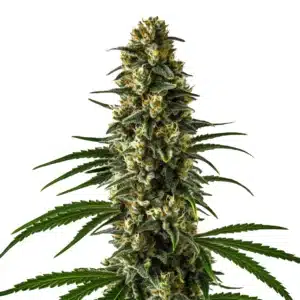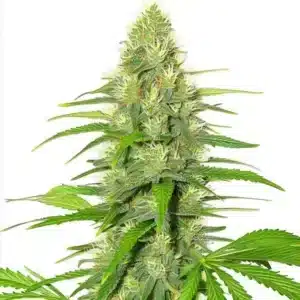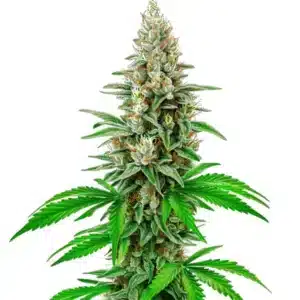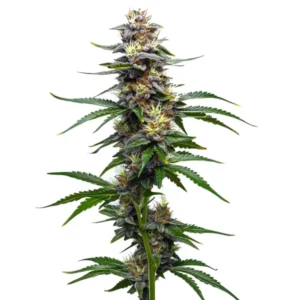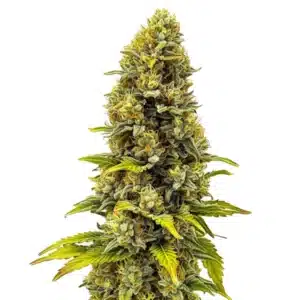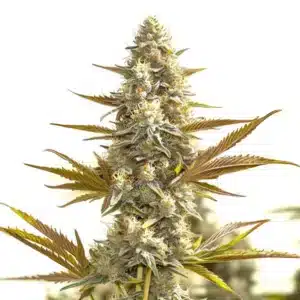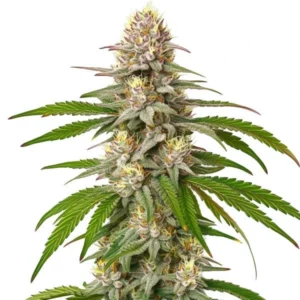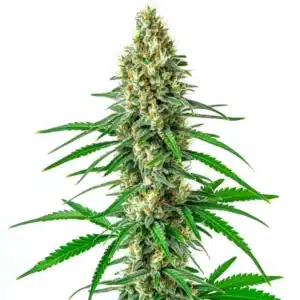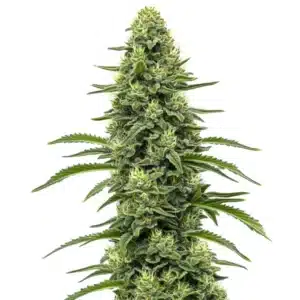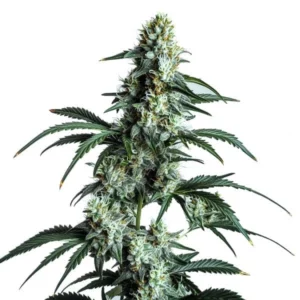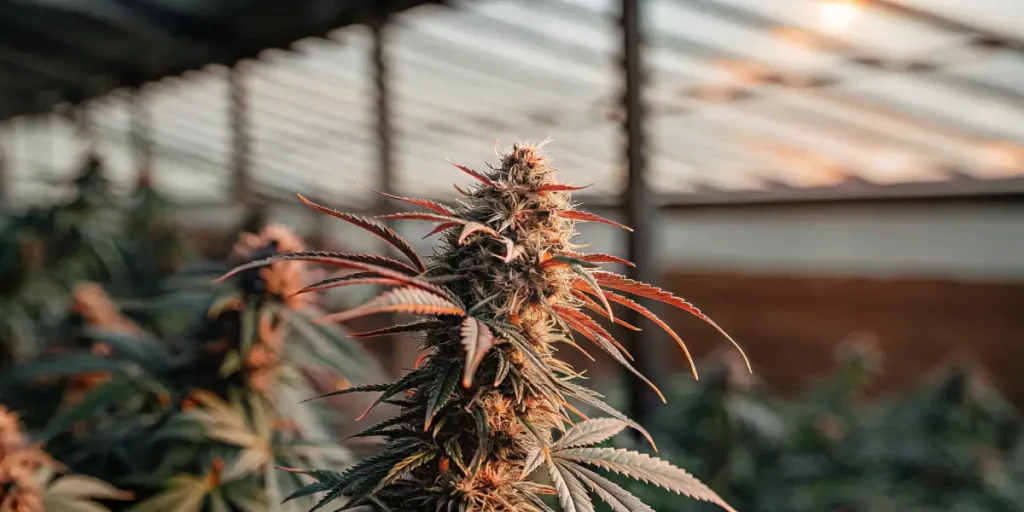
Cannabis Terpene Biosynthesis Explained
Cannabis terpene biosynthesis is a fascinating subject that many growers and enthusiasts dive into. Terpenes are the aromatic compounds in cannabis that give each strain its unique scent and flavor. These compounds aren’t just for show; they play a crucial role in the overall experience of a cannabis product. By knowing this process, you can better appreciate the complexity of your favorite strains.
The cannabis terpene biosynthesis process overview reveals how these aromatic compounds are naturally synthesized within the plant. Terpenes are produced in the same glands that create cannabinoids, such as THC and CBD. These compounds are essential not only for their aromatic properties but also for their potential therapeutic benefits. The synthesis of terpenes involves several pathways and enzymes that work in harmony to create the diverse profiles found in different strains.
Recommended Strains
Girl Scout Cookies
|
|
THC | 18% - 25% (Medium) |
|
|
Type | Feminized |
|
|
Yield | High |
|
|
Phenotype | 60% Indica / 40% Sativa |
White Widow
|
|
THC | 18% - 25% (Medium) |
|
|
Type | Feminized |
|
|
Yield | High |
|
|
Phenotype | 45% Indica / 55% Sativa |
Growers often choose strains based on their terpene profiles to achieve specific effects or flavors. For example, the strain Blue Dream is known for its sweet, berry-like aroma, which is due to its unique terpene composition. By delving into how cannabis terpenes are synthesized naturally, one can make informed decisions on which strains to cultivate or consume.
The Cannabis Terpene Biosynthesis Process Overview
The process of terpene biosynthesis in cannabis is complex but fascinating. It begins with the plant’s primary metabolic routes, where basic building blocks are formed. These building blocks then undergo a series of transformations to become the diverse range of terpenes found in cannabis. This transformation is facilitated by specific enzymes, each playing a role in creating the unique terpene profile of each strain.
In the cannabis terpene biosynthesis pathways, the mevalonate pathway and the methylerythritol phosphate pathway are both critical. These pathways produce isoprenoids, which are essential for terpene synthesis. The balance and interaction between these pathways determine the final terpene profile. This intricate process ensures that each cannabis plant can produce a wide variety of terpenes, offering a unique aromatic and therapeutic experience.
Knowing the cannabis terpene biosynthesis process overview is vital for both growers and consumers. By recognizing how different strains develop their distinct terpene profiles, one can appreciate the nuances that each plant offers. This knowledge empowers growers to optimize their cultivation methods, ensuring that they can bring out the best in each strain.
Moreover, the cannabis terpene biosynthesis process overview provides insights into the potential therapeutic applications of terpenes. As research continues, the interplay between terpenes and cannabinoids may reveal more about their combined effects. This knowing could lead to more targeted and effective use of cannabis products for various health conditions.
Promos & Deals
How Cannabis Terpenes Are Synthesized Naturally
Within cannabis plants, terpenes are synthesized in the trichomes, which are the glandular hairs found on the surface of the plant. Trichomes are also responsible for producing cannabinoids, making them a powerhouse of compound production. The synthesis begins when the plant absorbs light, which fuels the photosynthesis process. This provides the energy required for terpene production.
As the plant matures, the production of terpenes is influenced by various factors, including the plant’s genetics, the environment, and the growing conditions. For instance, the strain Girl Scout Cookies is famed for its rich terpene profile, which contributes to its earthy and sweet aroma. By optimizing growing conditions, growers can enhance the natural synthesis of terpenes, leading to a more potent and flavorful harvest.
How cannabis terpenes are synthesized naturally is a process that reflects the plant’s adaptability and resilience. The synthesis involves a dynamic interaction between the plant’s genetic makeup and its environment. This natural process allows cannabis to produce a wide array of terpenes, each serving a specific function in the plant’s survival and reproduction.
By knowing how cannabis terpenes are synthesized naturally, growers can make informed decisions about how to cultivate their plants. This includes selecting the right strains and creating optimal growing conditions that enhance terpene production. The result is a more aromatic and effective product that meets the needs of consumers.
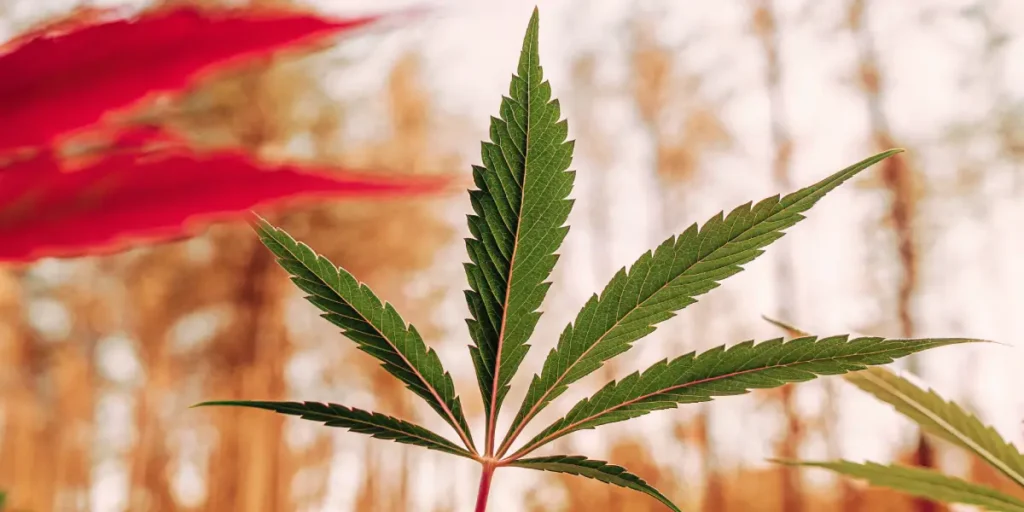
Knowing Terpene Biosynthesis in Cannabis Plants
To fully grasp cannabis terpene biosynthesis explained, it’s essential to look at the enzymes involved. Enzymes such as terpene synthases play a pivotal role in converting basic compounds into specific terpenes. Each enzyme is responsible for producing different terpenes, which combine to form a strain’s distinctive aroma and flavor.
For example, the strain White Widow is known for its peppery, citrus scent, thanks to its unique enzyme activity. These enzymes work like a factory assembly line, each step contributing to the final product. By nurturing the plant and ensuring optimal enzyme activity, growers can influence the terpene profile of their crops.
Knowing terpene biosynthesis in cannabis plants involves delving into the complex network of chemical reactions that occur within the plant. This intricate process is influenced by various factors, including the plant’s genetics and the environmental conditions in which it is grown. By comprehending these dynamics, growers can enhance the quality and potency of their cannabis crops.
Furthermore, knowing terpene biosynthesis in cannabis plants provides valuable insights into how different strains develop their unique characteristics. This knowledge can inform breeding programs and cultivation practices, leading to the development of new strains that meet specific consumer demands. Ultimately, this knowing contributes to the overall advancement of cannabis cultivation and research.
Cannabis Terpene Production Mechanisms
Several factors influence the production of terpenes in cannabis plants. Light exposure, temperature, and nutrient availability all play crucial roles. For instance, higher light levels can enhance terpene production, while extreme temperatures might hinder it. Knowing these factors helps growers create the ideal environment for terpene synthesis.
Many growers utilize specific techniques to boost terpene production, such as stress training or adjusting light cycles. For example, the use of stress techniques like topping or low-stress training can stimulate the plant to produce more terpenes as a defense mechanism. This results in a more robust and aromatic profile.
The cannabis terpene production mechanisms are a testament to the plant’s adaptability and resilience. By manipulating environmental conditions and employing specific cultivation techniques, growers can significantly influence terpene production. This allows them to tailor the aromatic and therapeutic properties of their cannabis crops.
In addition to environmental factors, the genetic makeup of the plant also plays a crucial role in cannabis terpene production mechanisms. Different strains have unique genetic profiles that determine their terpene content and composition. By selecting the right genetics and optimizing growing conditions, growers can achieve the desired terpene profile in their crops.
Explanation of Cannabis Terpene Biosynthesis Pathways
The pathways involved in cannabis terpene biosynthesis are intricate but essential for creating the diverse terpene profiles found in different strains. The mevalonate pathway and the methylerythritol phosphate pathway are the main routes through which terpenes are synthesized. These pathways involve a series of chemical reactions that convert simple sugars into complex terpene molecules.
Each pathway contributes uniquely to the overall terpene profile, with specific enzymes catalyzing reactions at each step. The balance between these pathways ensures the plant can produce a wide range of terpenes, each contributing to the plant’s aroma and therapeutic potential.
Cannabis terpene biosynthesis explained in terms of pathways reveals the sophisticated chemical processes that occur within the plant. The mevalonate pathway and the methylerythritol phosphate pathway each play a distinct role in terpene synthesis, with the interplay between them determining the final terpene profile of the plant.
By knowing the explanation of cannabis terpene biosynthesis pathways, growers and researchers can gain valuable insights into how different strains develop their unique characteristics. This knowledge can inform breeding programs and cultivation practices, leading to the creation of new strains with desired aromatic and therapeutic properties.
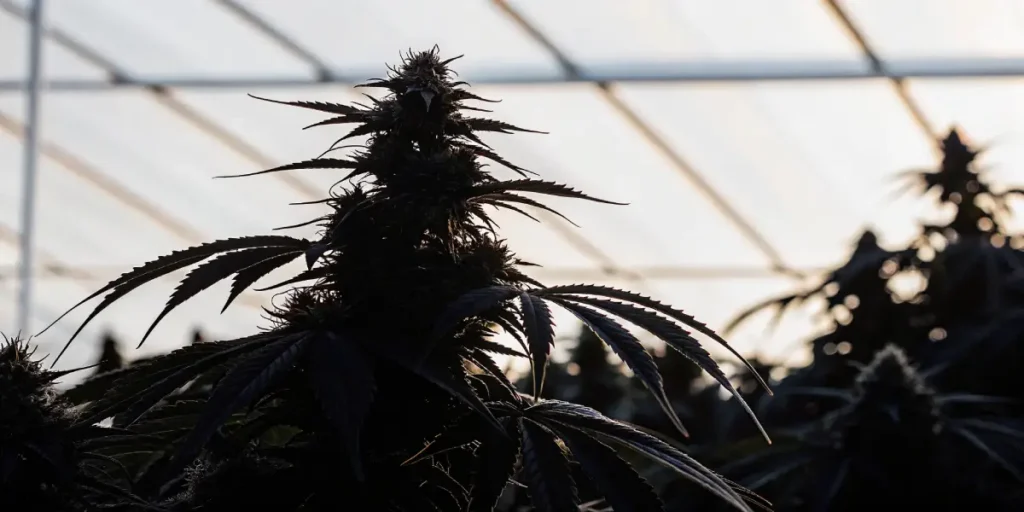
FAQs
What are terpenes in cannabis?
Terpenes are aromatic compounds found in cannabis and many other plants. They are responsible for the unique scents and flavors of different cannabis strains. Beyond their aromatic qualities, terpenes may also have potential therapeutic effects, such as anti-inflammatory or mood-enhancing properties.
In cannabis, terpenes work alongside cannabinoids like THC and CBD to create the entourage effect, enhancing the plant’s overall impact. Each strain has a unique terpene profile, which contributes to its distinct aroma and potential effects.
Knowing what terpenes are in cannabis provides valuable insights into how these compounds contribute to the overall cannabis experience. By recognizing the unique aromatic and therapeutic properties of terpenes, consumers can make more informed choices about the strains they choose to consume.
Moreover, the study of terpenes in cannabis is an ongoing area of research, with scientists exploring the potential health benefits of these compounds. As our knowing of terpenes grows, so too does the potential for developing new cannabis products that harness their therapeutic properties.
How do terpenes affect the cannabis experience?
Terpenes play a significant role in shaping the cannabis experience. They influence the aroma and flavor of the strain, which can impact the user’s enjoyment and preference. Beyond sensory effects, terpenes can also modulate the effects of cannabinoids, potentially enhancing or altering their impact.
For example, the terpene myrcene is known for its sedative properties, while limonene may have mood-enhancing effects. Knowing terpene profiles can help users select strains that align with their desired effects, whether they seek relaxation, energy, or creativity.
The impact of terpenes on the cannabis experience extends beyond their aromatic properties. By interacting with cannabinoids, terpenes can influence the overall effects of cannabis, enhancing or modulating the user’s experience. This interplay is a key aspect of the entourage effect, which is believed to enhance the therapeutic potential of cannabis.
By knowing how terpenes affect the cannabis experience, consumers can make more informed choices about the strains they choose to use. This knowledge allows them to select strains that align with their preferences and desired effects, whether they are seeking relaxation, energy, or creative inspiration.
Can growing conditions affect terpene production in cannabis?
Yes, growing conditions significantly impact terpene production in cannabis plants. Factors such as light exposure, temperature, humidity, and nutrient availability all play a role. Optimizing these conditions can enhance the plant’s terpene profile, leading to a more aromatic and flavorful product.
Growers often adjust environmental factors to maximize terpene synthesis, ensuring their crops develop the desired characteristics. Techniques such as stress training or altering light cycles can further enhance terpene production, resulting in a superior harvest.
The influence of growing conditions on terpene production in cannabis cannot be overstated. By carefully managing factors such as temperature, light, and nutrient availability, growers can significantly enhance the quality and potency of their crops. This allows them to produce cannabis with a rich and diverse terpene profile that meets consumer demands.
Knowing how growing conditions affect terpene production in cannabis is essential for both growers and consumers. By optimizing these conditions, growers can produce a more aromatic and flavorful product, while consumers can enjoy a superior cannabis experience that aligns with their preferences and needs.
Are there specific strains known for their terpene profiles?
Yes, many cannabis strains are renowned for their distinct terpene profiles. For instance, Sour Diesel is known for its pungent, diesel-like aroma, while Pineapple Express offers a sweet, tropical scent. These profiles are due to the unique combination of terpenes present in each strain.
When selecting strains, many users consider the terpene profile to ensure it aligns with their preferences and desired effects. By knowing the function of terpenes, users can make informed choices about which strains to cultivate or consume.
The unique terpene profiles of specific cannabis strains are a key aspect of their appeal to consumers. By knowing the distinctive aromatic and therapeutic properties of different terpenes, consumers can select strains that align with their preferences and desired effects. This knowledge allows for a more personalized and satisfying cannabis experience.
Furthermore, the diversity of terpene profiles among cannabis strains provides growers with opportunities to develop new and exciting products. By experimenting with different genetics and cultivation techniques, growers can create strains with unique and desirable terpene profiles that meet consumer demands.
How do enzymes influence terpene biosynthesis in cannabis?
Enzymes play a critical role in the biosynthesis of terpenes in cannabis plants. They act as catalysts, facilitating the conversion of basic compounds into specific terpenes. Each enzyme is responsible for producing different terpenes, contributing to the plant’s unique aromatic profile.
By influencing enzyme activity through selective breeding and cultivation practices, growers can alter the terpene profile of their plants. This allows for the creation of strains with desired characteristics, enhancing the overall cannabis experience.
The role of enzymes in terpene biosynthesis in cannabis is a testament to the plant’s complex biochemistry. By catalyzing chemical reactions, enzymes facilitate the conversion of simple compounds into the diverse array of terpenes found in cannabis. This process is essential for creating the unique aromatic and therapeutic properties of different strains.
Knowing how enzymes influence terpene biosynthesis in cannabis provides valuable insights into how different strains develop their distinctive characteristics. This knowledge can inform breeding programs and cultivation practices, leading to the development of new strains that meet specific consumer demands. Ultimately, this knowing contributes to the overall advancement of cannabis research and cultivation.


